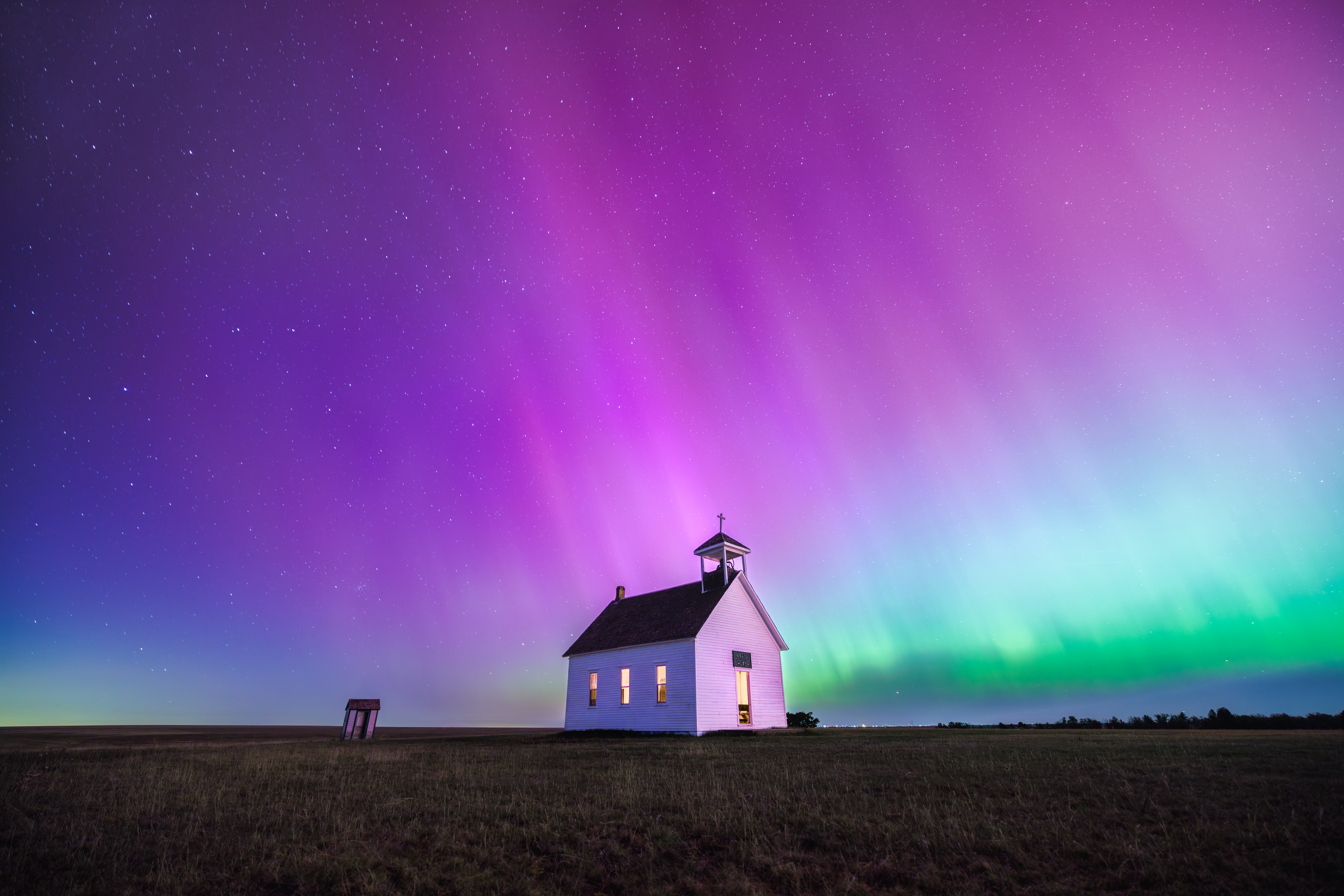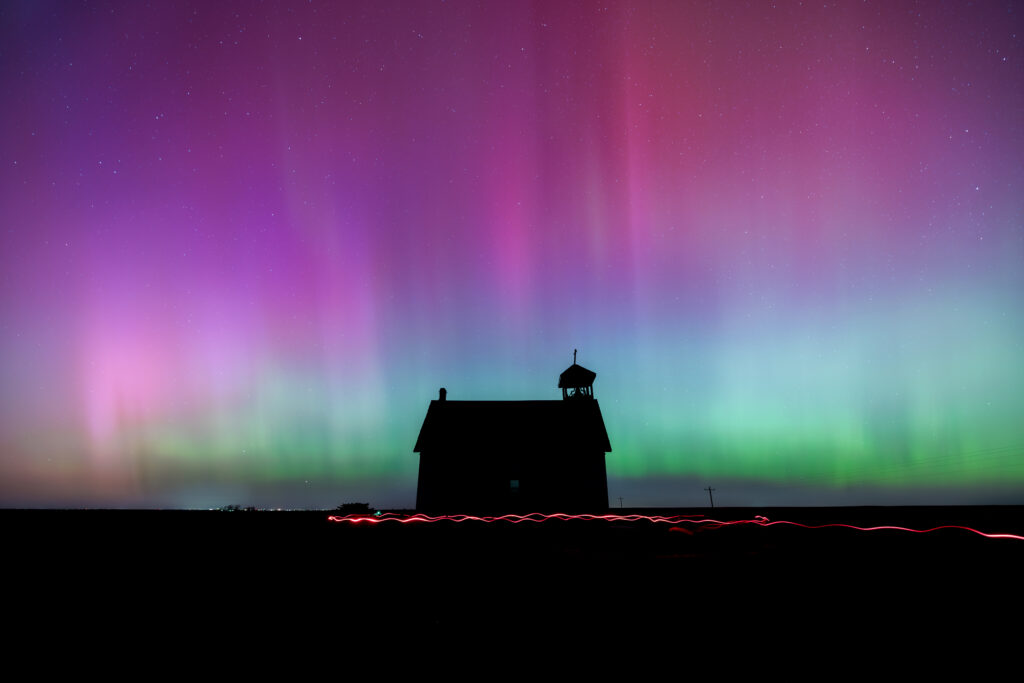
Photographing the Northern Lights in Colorado
Where and When?
In the early morning of May 11th and 12th, the aurora borealis had one of the strongest showings we’ve seen in decades. The best places to see the northern lights are far outside of cities, away from any sources of light pollution. Many people headed farther north to Wyoming and South Dakota, they still reached down to Colorado, so I decided to stay closer to home. Some friends and I decided to head out east from the front range to a small 19th century church; surrounded by open fields, grain silos, and seven miles outside of a town with a population of only 71, we had a spectacularly dark view in every direction


Camera info: Canon R5 with RF 15-35mm f2.8, both images taken at 30″, f2.8, ISO 400
Gear and Settings
Once we got out to the church the search for a good composition didn’t take long. Obviously, we’d have to face north to see the aurora, and with the church as the perfect standalone subject, it fits well almost anywhere in the frame. As for the settings – when dialing in your aperture, set it as high as possible. Whenever you’re taking photos of the night sky, it is important to use a lens that goes to f2.8 or higher. Many astrophotographers shoot as high as f1.2, but luckily the northern lights are so bright it doesn’t affect them as much as typical astrophotography. When adjusting ISO, use the typical rule of lowering it as much as possible to prevent excessive noise, which will show even more when shooting at night. Lastly, when setting your shutter speed, make sure you are using the 500 rule! This rule is important because it tells you how long your shutter can remain open without causing stars to streak. The formula for this rule is simple: 500 / (CF x FL) CF = Crop Factor, FL = Focal Length. Using a Canon R5, my crop factor is 1x, and the lens used has focal length of 15mm, making my formula 500 / (1 x 15) = 33.33 leaving me 33.33 seconds to expose without causing streaks. The crop factor is an important consideration if you are using an APS-C sensor model like R7 or R10, which have a crop factor of 1.6. This rule however, is not always perfect, so make sure you zoom in and double-check your pictures in the field!
Other Considerations and Takeaways
Something to always think about in your pictures is what stylistic twist you bring to the table. When shooting any kind of landscape, but especially big events where everyone will have their own unique picture, it’s important to think about what you will add to your own art with your creativity. As seen above and below, I love using light painting. This has been around forever, and is by no means the most original or creative flair to photography, but I like to think it adds something a little different than most people will see. Even simple changes in composition can help with this. In the bottom left photo, my friend started his exposure at the exact same time, but was 50ft away from me facing the church at a 45 degree angle, so his composition and photo look extremely different.
In the end, this was a magical experience that I hope to relive again one day. Whether it’s in Alaska, or another rare sighting here at home, I’ll be ready to head out into the night if it ever comes my way.
/


May 12, 2024